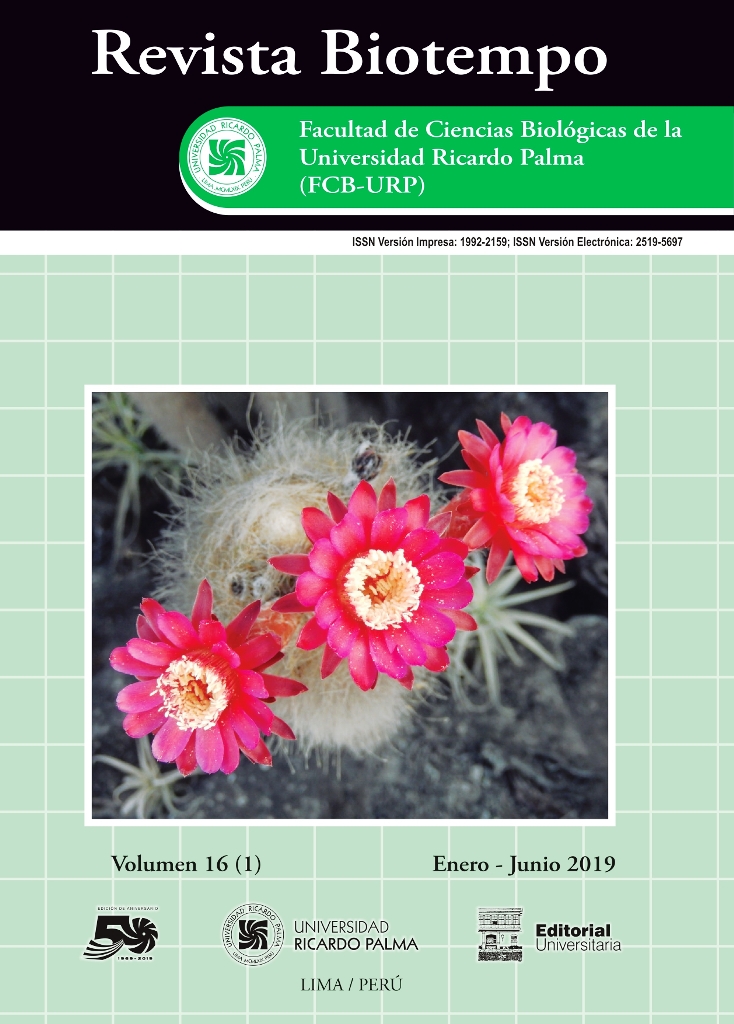ANESTHETIC MONITORING IN FOUR PHYSIOLOGICAL PARAMETERS IN RABBITS (ORYCTOLAGUS CUNICULUS) WITH PROTOCOLS OF ANESTHETICS BASED ON MELOXICAN, ACEPROMAZINE, PROPOFOL, XYLACINE AND TRAMADOL
DOI:
https://doi.org/10.31381/biotempo.v16i1.2178Abstract
Th e present investigation was carried out in order to evaluate the stability of the anesthetic monitoring of a protocol based on Meloxican, Acepromazina, Propofol, Xilacina and Tramadol in Oryctolagus cuniculus (Linnaeus, 1758). Eight male rabbits of the New Zealand race were subjected to 3 anesthesia protocols with 8 pseudo replicas: 2 treatments and 1 control with a one week interval between each. Th e fi rst protocol (protocol 1) was based on Meloxicam 0.3 mg·kg-1 SC, Acepromazine 0.5 mg·kg-1 IM, Propofol (induction 8mg·kg-1 maintenance 0.5 mg·kg-1 IV), the second protocol (protocol 2) was based on Meloxicam 0.3 mg·kg-1 SC, Acepromazine 0.5 mg·kg-1 IM, Propofol (induction 8 mg·kg-1 maintenance 0.5 mg·kg-1), Tramadol 5 mg·kg-1 IV and control (control protocol) was based on Meloxicam 0.3 mg·kg-1 SC, Acepromazine 0.5 mg·kg-1 IM, Ketamine 30 mg·kg-1 IM, Xylazine 5 mg·kg-1 IM. Physiological parameters (heart rate, respiratory rate, oxygen saturation, body temperature) were evaluated every 15 min for 60 min. Heart rate, respiratory
rate, oximetry and temperature were aff ected in the control protocol (p <0.05) but not in protocols 1 and 2. FC (200), degrees. In conclusion, the protocols based on Propofol and Propofol tramadol, are safe at the doses used for teaching, where the heart rate, respiratory rate and oxygen saturation apparently behave with stability; however, active thermal support is recommended during use in anesthesia.
(219) and (218); FR (100), (52) and (55); SpO2 (94), (97) and (96); Tº (36.6), (37.3) and (37.2), respectively. There
was no significant difference (p> 0.05) in the use of protocol 1 or 2, as the heart rate was the only physiological constant influenced by the ASA (“American Society of Anesthesiologists”, is used to estimate the risk posed by anesthesia for the different states of the patient) in the 3 protocols; fi nally, the 3 protocols evaluated produced hypothermia to different degrees. In conclusion, the protocols based on Propofol and Propofol tramadol, are safe at the doses used for teaching, where the heart rate, respiratory rate and oxygen saturation apparently behave with stability; however, active thermal support is recommended during use in anesthesia.










